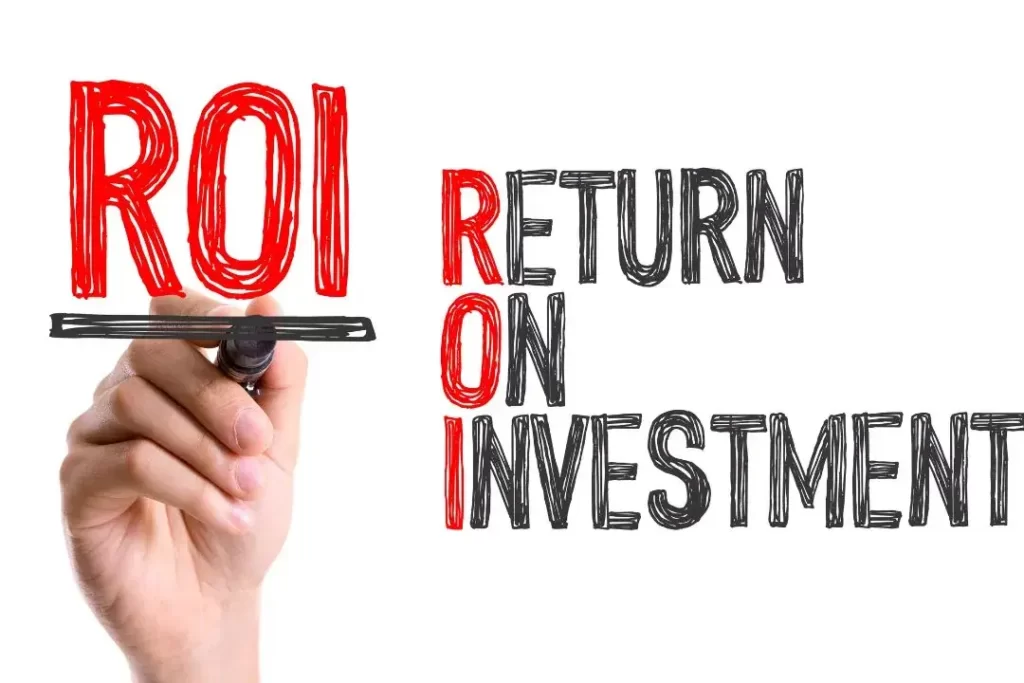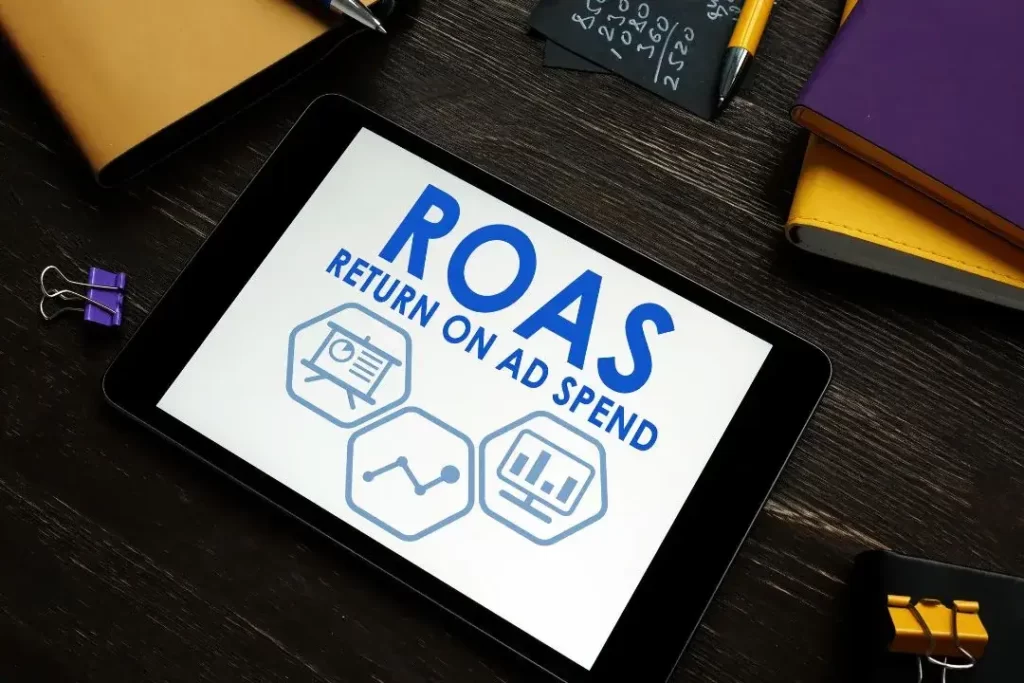
ROI vs ROAS: Discover Your Strategy to Maximize Your Returns!
"ROI vs ROAS: The Battle for Profitability - Discover the Secrets to Digital Triumph!"
In digital marketing, you might have heard of two crucial terms “ROI” and “ROAS. While ROI once stood as the preeminent metric for evaluating digital success, the business landscape has shifted, with ROAS progressively steering the course of digital strategy. But what exactly do ROI and ROAS signify? More importantly, how do they differ concerning digital advertising? Our guide on ROI vs ROAS is here to give you the knowledge you need about performance metrics. Let’s dive in and help you make informed decisions!
What is ROI?

ROI, also called Return on Investment, is a handy financial tool that measures the return you receive from your investment compared to its cost. Essentially, it’s the profit or loss you make on your investment. ROI is your trusty financial navigator, enabling you to determine if your investments are worthwhile and worth the time and gamble.
The Formula for Calculating ROI
Calculating ROI may sound intimidating, but fear not, for it’s a straightforward formula that even those new to finance can grasp:
ROI = (Net Profit / Cost of Investment) x 100
To put it simply, first, you need to determine the net profit. After subtracting all costs and expenses, it is the money you’ve earned from your investment. Next, you divide this net profit by the initial cost of the investment. Finally, multiply the result by 100 to express the ROI as a percentage.
For example, if you invested $1,000 in a venture, and it yielded a net profit of $300, your ROI would be calculated as follows:
ROI = ($300 / $1,000) x 100
ROI = 0.3 x 100
ROI = 30%
If your investment results in a loss, indicating that your net profit is less than your original investment, it is a negative ROI. In these situations, reevaluating your strategies and making knowledgeable decisions is vital to reverse the current trend.
What is ROAS?

ROAS is a critical metric that measures the effectiveness of your advertising campaigns. Simply, it reveals how much revenue your marketing efforts generate for each dollar spent. It shows you the path to profitability in the digital landscape.
Formula For Calculating ROAS
You can determine it using the following straightforward formula:
ROAS = Revenue Generated from Advertising / Advertising Cost
For instance, if you spent $500 on an online ad campaign and generated $2,000 in revenue, your ROAS would be:
ROAS = $2,000 / $500 = 4
It means that for every dollar spent on advertising, you earned $4 in revenue.
When your ROAS is strong, your ads are doing a fantastic job – reaching the perfect audience, delivering a message that captures hearts, and making your investment work wonders.If you want to learn more about Google Ads Vs Facebook Ads Click here.
What is the difference between ROI and ROAS?

Let’s explore the differences in ROI vs ROAS. ROI assesses the overall profitability of investments, while ROAS zeroes in on the efficiency of advertising spend in generating revenue. Both metrics play crucial roles in guiding strategic decisions for businesses, with ROI offering a holistic perspective on returns across different investments and ROAS spotlighting the effectiveness of marketing campaigns.
Aspect | ROI (Return on Investment) | ROAS (Return on Advertising Spend) |
Definition | A financial metric measuring the efficiency of an investment in generating returns. | A marketing metric indicating revenue generated for each dollar spent on advertising. |
Focus | Overall profitability of an investment | Specific to evaluating advertising effectiveness |
Application | Used for various investments – business projects, stocks, real estate, etc. | Primarily applied in digital marketing campaigns across different platforms. |
Scope | Broadly analyzes all costs and gains associated with an investment. | Concentrates on advertising spend and resulting revenue generated by campaigns. |
Calculation Formula | ROI = (Net Profit / Cost of Investment) x 100 | ROAS = (Revenue from Advertising / Cost of Advertising) |
Interpretation | Positive ROI indicates a profitable investment; higher percentage is better. Negative ROI implies a loss; lower percentage reflects poorer investment. | A ROAS greater than 1 suggests revenue investment; generated exceeds advertising costs. ROAS less than 1 implies revenue is less than advertising expenditure. |
Advantages | It offers a holistic view of investment returns and overall business profitability. | Focuses on campaign performance, enabling better marketing decision-making. |
Limitations | May not reveal the efficacy of specific marketing campaigns or strategies. | Doesn’t consider all aspects of profitability, as it concentrates on advertising only. |
Integration | It integrates with overall financial planning and decision-making for businesses. | Easily integrated into digital marketing tools, aiding in performance analysis. |
Revolutionize Your Returns: Expert Tips for Enhancing ROI and ROAS
Data Accuracy
The first rule of thumb for ROI and ROAS calculation is data accuracy. Make sure you have precise and up-to-date data to yield reliable results. Remember, the quality of your inputs directly influences the insights you gain.
Audience Targeting
Identify your ideal customers, understand their desires, and tailor your marketing efforts accordingly. With targeted campaigns, you’ll witness higher engagement, increased conversions, and improved ROI and ROAS.
The Context
Consider the broader context and time frame of your analysis. Explore the intricate interplay of other costs and advertising strategies to view your campaign’s impact comprehensively.
Remarketing
Don’t let your customers slip through your fingers. Implement remarketing campaigns to re-engage those who have shown interest in your offerings. Remind them of the value you provide, rekindling their desire to convert and boost ROI and ROAS.
Complementary Metrics
Relying solely on ROI and ROAS may leave gaps in your insights. Pair these metrics with others to create a comprehensive marketing performance report. Assess additional data to gauge how much revenue stems from advertising spend and evaluate the overall profitability of your tactics.
Conclusion
In conclusion, understanding the nuances of ROI vs ROAS is paramount for navigating the digital marketing landscape. As ROI’s reign gradually gives way to ROAS’s prominence, businesses must adapt their strategies accordingly. Now you can hold the key to discover the full potential of your campaigns and steer them towards unparalleled success.
frequently asked questions
ROI (Return on Investment) measures the profitability of an investment by comparing gains to costs. ROAS (Return on Advertising Spend) specifically assesses the revenue generated per advertising dollar spent.
While both metrics have their significance, ROAS is gaining traction as a more relevant metric for guiding digital strategies.
Absolutely! ROI and ROAS complement each other, providing a comprehensive view of campaign performance and guiding decision-making.
To calculate ROAS, divide the revenue generated by the cost of advertising.
ROAS is considered better for assessing advertising efficiency, as it directly relates revenue to advertising spending.
ROAS can be greater than ROI, especially when the focus is on revenue generated through advertising.
Businesses should prioritize ROI and ROAS, balancing profitability with advertising efficiency to achieve the best results.
ROI is commonly more relevant in industries with high upfront investments and long-term profitability goals.
By understanding and analyzing both metrics, you can identify underperforming campaigns, allocate budgets more effectively, and optimize your overall marketing strategy for tremendous success.
Most Popular


Types Of Websites

Types of Keywords

What Is Sitemap
Social Share
Categories
Subscribe To Our Weekly Newsletter
No spam, notifications only about new products, updates.

How to Disable Comments on WordPress
An Ultimate Step-By-Step Guide: How to Disable Comments on WordPress Just In The Nick Of Time A Quick Guide – Learn how to disable comments

Types Of Websites
Dream, Create, Inspire: 15 Types Of Websites You Can Create In 2023! Stay Ahead of the Curve: Trendsetting Website Concepts for 2023! The Internet is

Types of Keywords
The Ultimate Guide to 17 Types of Keywords You Can’t Ignore “Discover, Target, Succeed: The Power of Keywords Revealed!” 3.5 billion searches are carried out

What Is Sitemap
What Is Sitemap And Why Your Website Must Have One If You Wish To Rank Top On Google “Make Your Website Get Crawled And indexed

How Google Evaluates Links for SEO
Linking the Dots: How Google Evaluates Links For SEO? “Linking Up with Google: Your Guide to Mastering SEO Through Link Evaluation” Links, sometimes known as
How to Add Facebook Pixel Code in WordPress
How to Add Facebook Pixel Code in WordPress Free! Your Ultimate Step-By-Step Guide “Transform Visitors into Valuable Insights for Ultimate Marketing Triumph” Facebook Pixel is
